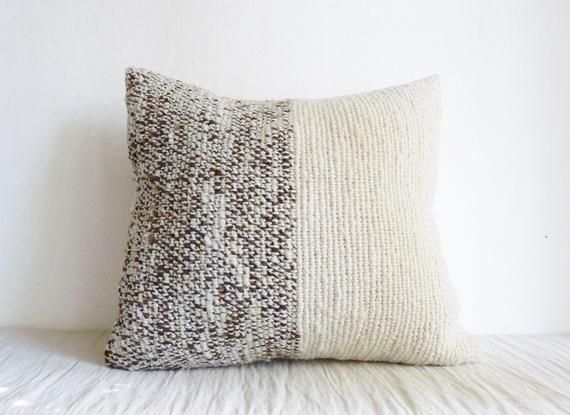Creating A Safe And Comfortable Home For Seniors

As loved ones age, it becomes more critical to ensure their home is adapted for safety, accessibility, and comfort. Making some modifications and embracing helpful tools can allow seniors to maintain independence while living in a space that supports their evolving needs. With a bit of preparation and TLC (Tender Loving Care), you can create a home environment where seniors can thrive.
1. Choosing the Right Adult Pull-Up Diapers
One of the critical elements in ensuring the comfort and well-being of seniors is selecting appropriate adult pull up diapers. These products help in offering convenience and dignity, allowing seniors to maintain their independence while managing incontinence issues.
It’s crucial to choose high-quality, comfortable, and easy-to-wear pull-up diapers that provide adequate protection without causing discomfort or irritation.
2.Prevent Falls and Improve Accessibility
Take measures to help prevent falls and make the home more accessible to navigate. Ensure carpets are secured firmly to the floor so they do not slip. Apply non-slip decals or traction tape on tile or wood floors, especially in high-moisture areas like the bathroom. Remove clutter and secure extension cords and wires out of walkways.
Improve lighting by using maximum wattage bulbs, night lights, motion sensor lights, and lamp shades to reduce glare. Install grab bars, railings, shower seats, elevated toilet seats, and non-slip mats in bathrooms. Furniture with armrests makes it easier to sit and stand. You may also want to obtain mobility aids like canes or walkers.
3.Adapt the Kitchen
In the kitchen, place commonly used items within easy reach. This can involve lowering or raising shelves and drawers or using grabber tools. Mark edges of countertops with high contrast tape for the visually impaired.
Use tea kettles with auto shut-off and stove knob covers. Replace appliances with easy-to-use touch controls. Install a warning system for when the stove is accidentally left on. Use light dishes that are easy to grasp. Non-skid placemats help hold dishes steady.
4.Adjust Bedrooms and Living Areas
For bedroom and living areas, arrange furnishings to allow at least 3 feet wide paths for walking aids or wheelchairs. Use sturdy chairs with firm, non-slip cushions and armrests for support when sitting or standing.
Mattresses should be soft enough or sagging or low to the ground – consider installing bed rails or placing mattresses on risers to increase height. Install remote-controlled electric curtains, lights, and a TV to reduce the need to get up frequently. Thermostats should have large digital numbers that are easier to read and adjust. Place cordless phones with enhanced volume controls strategically around the home and post emergency numbers visibly on the fridge or by phones.
Also, set up personal alert systems like medical bracelets and video monitors for added security and connectivity if assistance is needed. Adjusting the bedroom and living room for a senior’s evolving abilities is critical.
5.Assist with Memory Care
For memory care, use large, high-contrast labels, pictures, or color coding to help identify different rooms, cabinets, drawers, and everyday items. Write daily tasks, schedules, and reminders on erasable whiteboards or notepads placed visibly in main living areas. Post large calendars and analog clocks clearly displaying the date, day, and time.
Play favorite music from the person’s youth to evoke positive memories. Install monitoring devices and sensors to ensure appliances are turned off, doors are locked, and stoves or irons are not left unattended. Provide jigsaw puzzles, crossword books, card games, and other engaging activities to exercise the mind.
Simple arts and crafts projects also keep hands busy and provide a sense of accomplishment. With some creativity, you can implement valuable prompts, reminders, and aids.
6.Adapt the Outdoors
Adapt the outdoor areas for accessibility, too. Repair uneven pavement, cracks, and holes that could cause tripping. Add sturdy ramps in place of stairs where possible. Improve lighting around entries and pathways by installing motion sensor lights, solar lights, or low-level lights to illuminate walkways at night.
Install sturdy railings on both sides of any existing stairways for support and stability. Use motion sensor lights to automatically turn on when someone is entering or exiting the home. Keep walkways consistently clear of debris, snow, ice, leaf piles, and anything else that could cause slipping.
Add non-slip outdoor mats on porches, decks, and patios. Ensure yard tools are lightweight yet durable, with thick padded grips that are easy to hold. Simplify gardening tasks by installing elevated garden planters and beds that reduce the need to bend over.
Be mindful of landscaping choices by avoiding plants with thorns that trigger allergies or require frequent upkeep, like pruning. Adapting the exterior areas takes some planning but is vital for safety.
Final Words
With some thoughtful modifications, technology, and extra assistance, you can create a home that will safely and comfortably support seniors as they age.
Consult professionals regarding options appropriate for specific mobility and health considerations. A well-adapted home enables greater independence and enhances quality of life.




